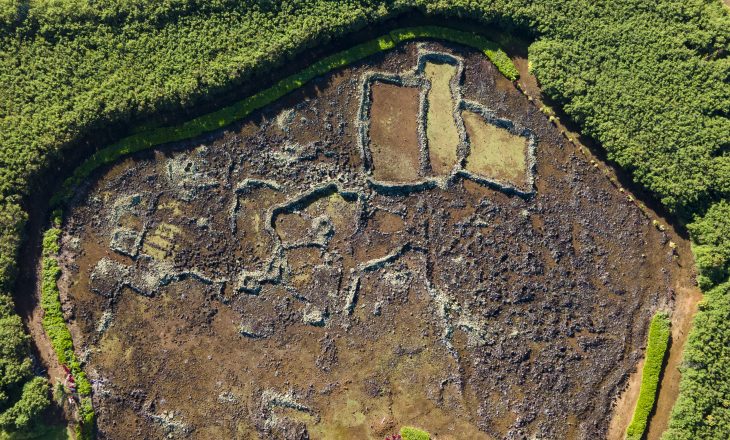Ancient Engineering: How Water Flowed into the South Side

Kōloa Field System: Ancient Engineering to Saturate the South Side
As our community works together to ensure a sustainable future, Grove Farm is inspired by examples from our island’s history that show responsible land stewardship.
In sunny Kōloa, where the weather is dry, the soil is rocky, and lava tubes crisscross underground, native Hawaiians found genius ways to irrigate their agricultural fields to keep their ahupuaʻa thriving. Back in the late ’70s and early ’80s, evidence was unearthed that revealed the Kōloa Field System, dating back to 1400 A.D. This ancient wonder spans a whopping 1,000 acres and was a game-changer, bringing much-needed water to the area.
Picture this: a thousand acres of sophisticated ʻauwai (irrigation ditches) that fed terraced loʻi kalo and other fields full of sweet potato, bananas, and native sugar cane.
Mastering the flow of water is no small feat, but the native Hawaiians were pioneers. They meticulously hand-dug a system, allowing water to gracefully descend from mauka to makai. Given Kōloa’s less-than-ideal farming conditions with its limestone and rocky terrain, they discovered precious pockets of land with soft soil, aptly named kīpuka—nature’s untouched havens amidst the lava.
